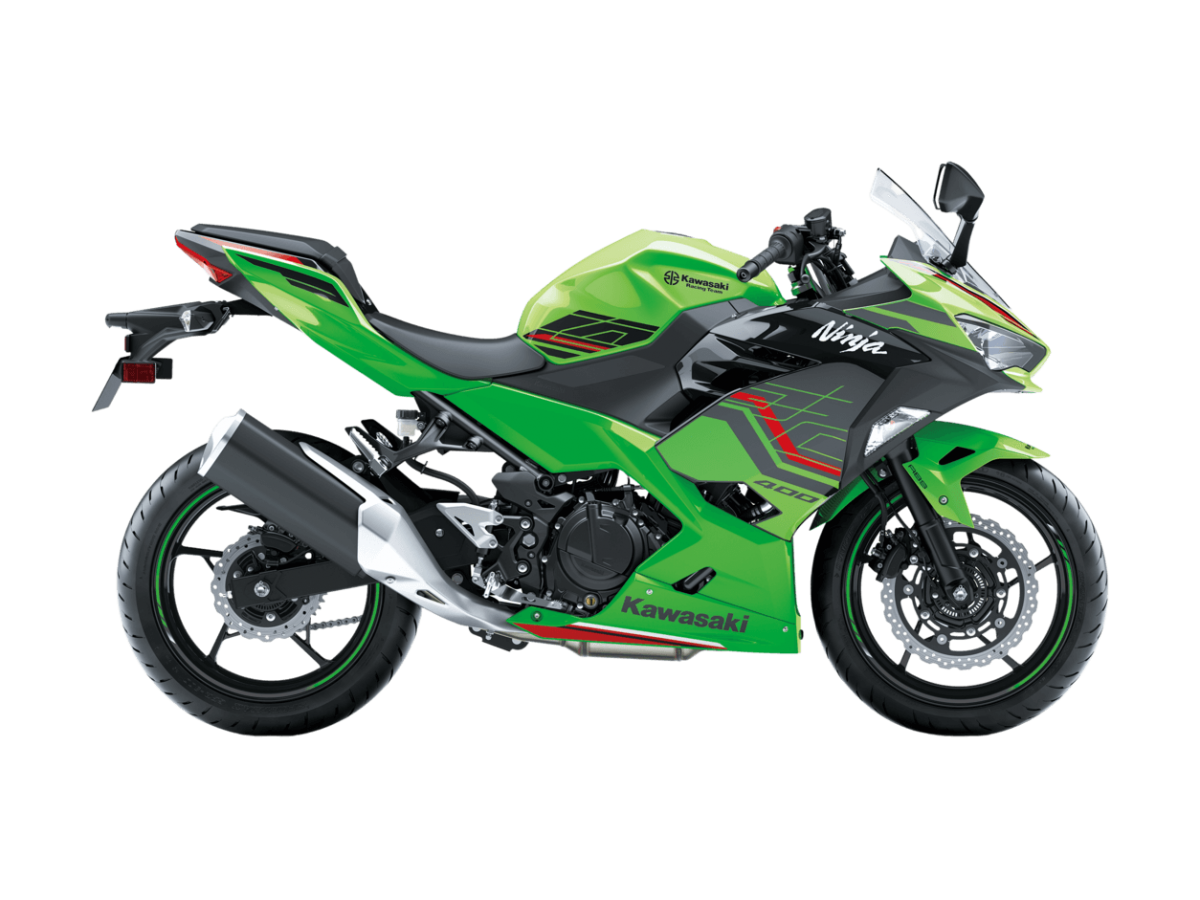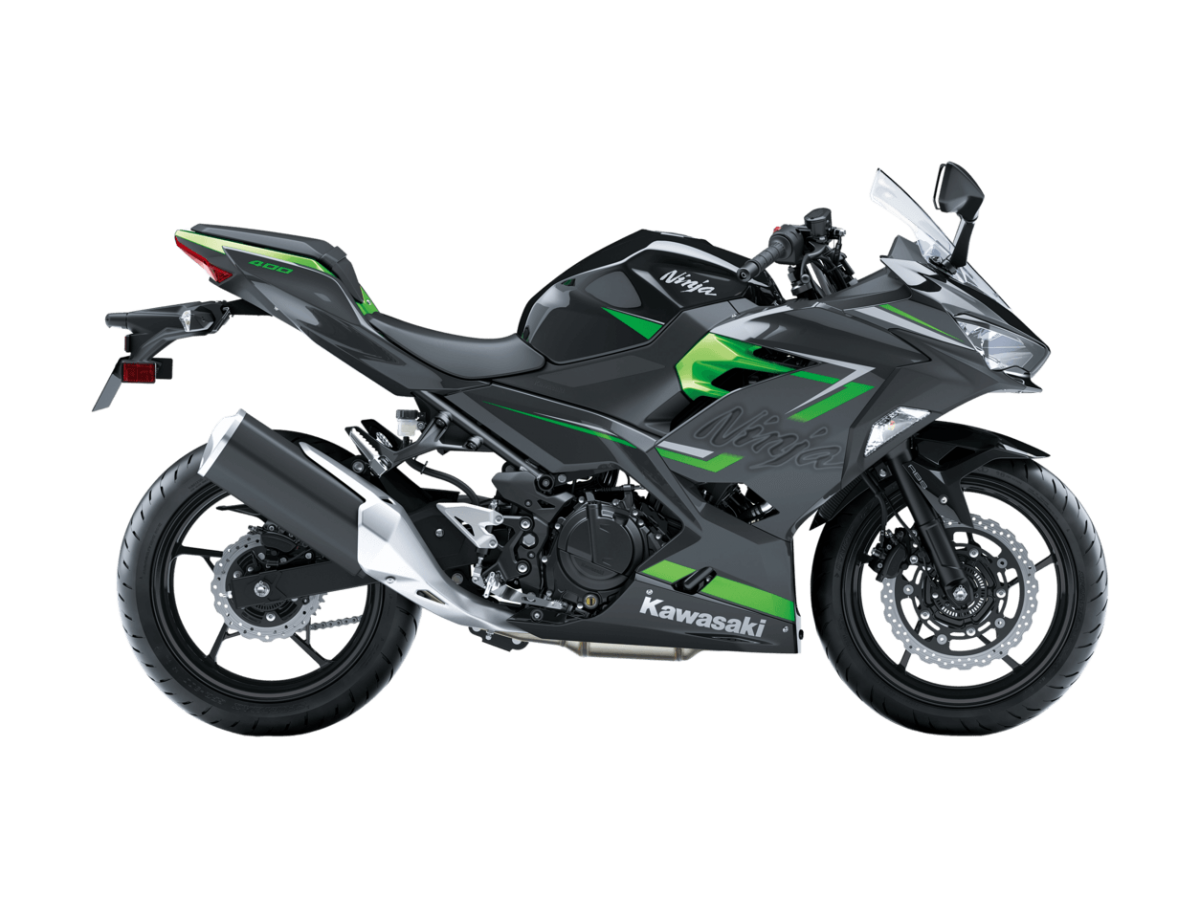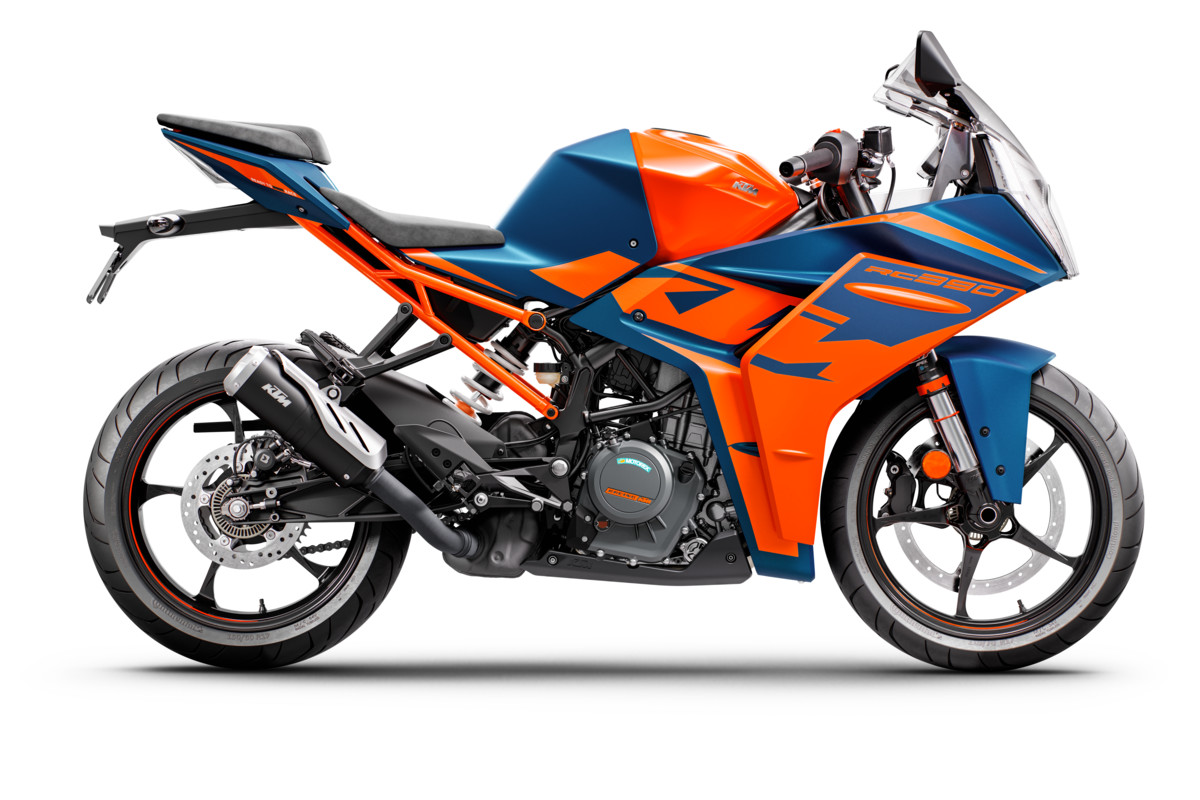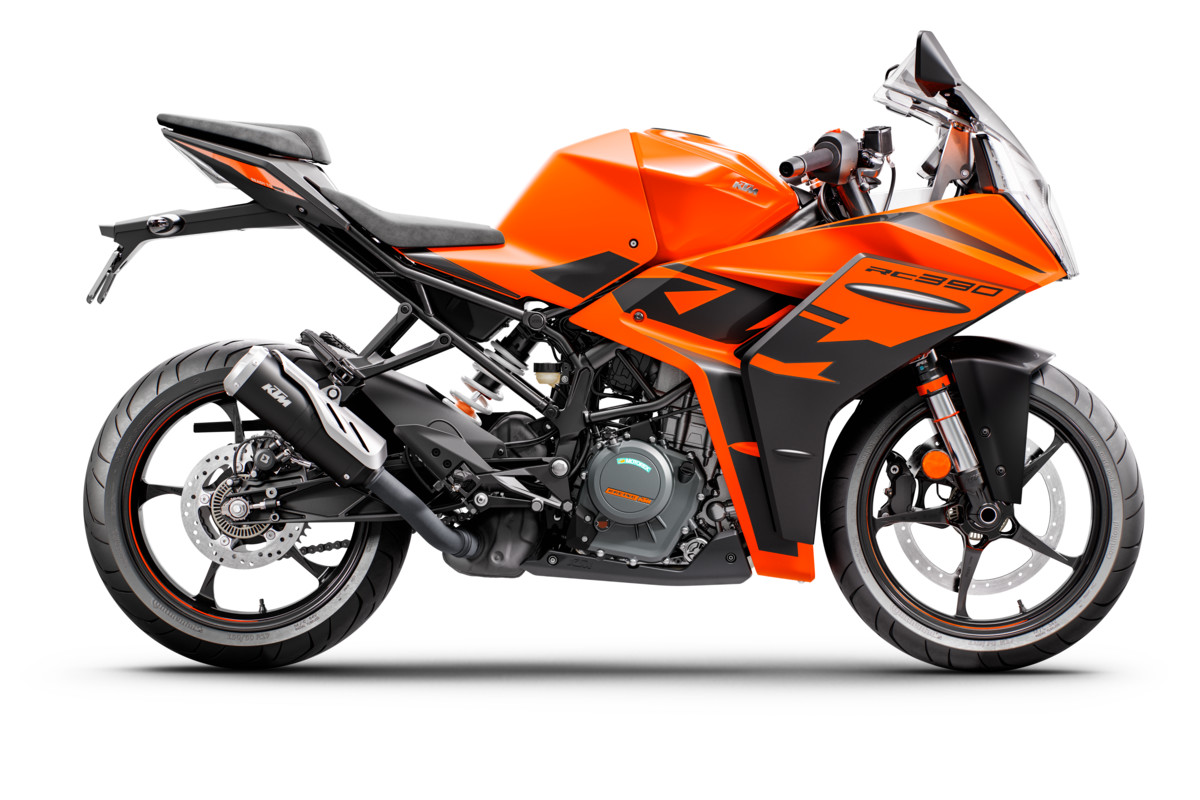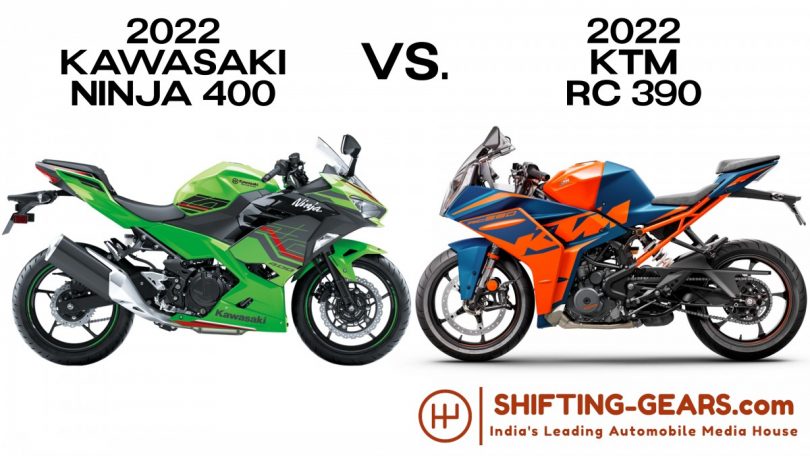The sub-400cc market is starting to heat up. Kawasaki India has recently re-launched its Ninja 400 in the Indian market, with a BS6-compliant engine and new colours. The Ninja 400, though a brilliant bike, never really set the sales charts on fire. This was largely down to the bike’s high pricing. And even though Kawasaki kept the pricing the same as before, its competition has gotten more expensive.
On the other hand, we have the 2022 KTM RC 390. Known as one of the sharpest handling bikes in its segment, KTM has now made tweaks to the ergonomics to make it more suitable for street riding. However, it still retains its sharp handling characteristics. The new update also brings it in line with the other 390s in KTM’s lineup. The electronics and features also get a big upgrade. These updates don’t come cheap, and the bike is much more expensive than before.
In this specification comparison, we pin the two to see if the KTM is the VFM product it once was or if going with the more expensive Kawasaki makes more sense.
2022 Kawasaki Ninja 400 Vs. KTM RC 390 – Price
Firstly, the pricing. Kawasaki India surprised everyone by pricing the Ninja 400 the same as before. As we have said before, it is both good and bad. Though we expected a price hike, we were pleasantly surprised to see it did not get one. The 2022 Kawasaki Ninja 400 retails at INR 4,99,000 ex-showroom.
Meanwhile, even though the KTM received a big price bump for its 2022 avatar, it still seems like a bargain in comparison. Though the price hike for the 2022 KTM RC 390 is big, it also brings big improvements. KTM made changes to the instrument cluster, wheels, chassis, ergonomics and much more. The 2022 KTM RC 390 comes with a price tag of INR 3,13,922 ex-showroom.
Thus, the KTM is INR 1.85 lakh cheaper than the Kawasaki. These prices are also ex-showroom prices, and the on-road prices will see an even bigger difference. For the cost of the Kawasaki Ninja 400, you could get a KTM RC 390, a premium electric scooter for daily commutes and still have some money left.
2022 Kawasaki Ninja 400 Vs. KTM RC 390 – Colour Options
For the 2022 model year, both the models get two new colour options. The 2022 Kawasaki Ninja 400 is available in – Lime Green and Metallic Carbon Grey. On the other hand, the 2022 KTM RC 390 is available in – KTM Factory Racing Blue and KTM Orange.
2022 Kawasaki Ninja 400 Vs. KTM RC 390 – Engine & Gearbox
Except for making it Euro-5/BS6-compliant, Kawasaki has not made any changes to the engine of the Ninja 400. However, it is not a bad thing. The Ninja 400 continues to use a 399cc liquid-cooled parallel-twin motor. The fuel-injected motor also gets a 4-valve DOHC valvetrain. The engine makes 45 PS of power at 10,000 rpm and 37 Nm of torque at 8,000 rpm.
Meanwhile, the KTM RC 390 uses a 373cc liquid-cooled single-cylinder motor. Like the Ninja 400, the KTM also uses a 4-valve DOHC setup. The RC 390 makes 43.5 PS of peak power at 9,000 rpm and max torque of 37 Nm at 7,000 rpm. Thus, compared to the Ninja 400, it produces 1.5 PS less power, and torque output is the same on both bikes. However, the peak power and torque arrive earlier in the rev-band on the RC 390. KTM also claims the 2022 RC 390 has the best-in-class power-to-weight ratio of 253 PS per tonne.
Both the bikes use a 6-speed gearbox and also feature a slip and assist clutch. However, KTM has also equipped the 2022 RC 390 with a bi-directional quickshifter. Hence, once on the move, you can ride the RC 390 without using the clutch at all.
2022 Kawasaki Ninja 400 Vs. KTM RC 390 – Suspension, Brakes & Tyres
The 2022 Kawasaki sees no change to its suspension hardware. Thus, it continues to use a 41 mm telescopic fork at the front with 120 mm of travel. At the rear, it uses a Bottom-Link Uni-Trak gas-charged shock with 130 mm of travel. The shock also gets preload adjustability. As for the braking hardware, the Ninja 300 uses a 310 mm semi-floating petal disc at the front with a dual-piston calliper. Meanwhile, the rear uses a 220 mm petal disc with a dual-piston calliper. The Ninja 400 rides on a 110/70 front and a 150/60 rear tyre with 17-inch rims. Since we have not seen the India-spec bike yet, we are not sure what tyres it will use.
Unlike the Kawasaki, KTM made changes to the 2022 RC 390’s suspension. The bike now features a new WP APEX suspension setup. The front uses 43 mm ‘open-cartridge type’ upside-down forks with 120 mm of travel. At the rear, it uses a WP APEX monoshock with 150 mm of travel. The rear also gets preload adjustability. KTM has increased the front and rear wheel travel for the 2022 RC 390. For braking, the RC 390 uses a 320 mm disc with four-piston radially-mounted callipers at the front. At the rear, it gets a 230 mm single-piston floating calliper. Tyre sizes are identical to the Ninja 400. However, we know that KTM offers it with the Metzeler Sportec M5 tyres.
Both the bikes offer Dual-Channel ABS as standard. However, the KTM also features Cornering ABS, Supermoto ABS and a traction control system.
2022 Kawasaki Ninja 400 Vs. KTM RC 390 – Dimensions
The 2022 Kawasaki Ninja 400 retains its dimensions. Hence, it measures 1,990 mm in length, 710 mm in width and 1,120 mm in height. The wheelbase stands at 1,370 mm. The Ninja 400 has a ground clearance of 140 mm and a seat height of 785 mm. It tips the scales at 168 kg and has a fuel tank capacity of 14 litres.
On the other hand, the 2022 RC 390 measures 2,145 mm in length, 760 mm in width, and 830 mm in height. The wheelbase of the RC 390, at 1,340 mm, is shorter than the Ninja 400. The ground clearance of the RC 390 is 153 mm, which is 13 mm more than the Ninja 400. The seat height of the RC 390, at 835 mm, is much higher than the Ninja 400. The bike tips the scales at 172 kg and has a 13.7-litre fuel tank capacity.
Also Read: 2022 KTM RC 390 Review
